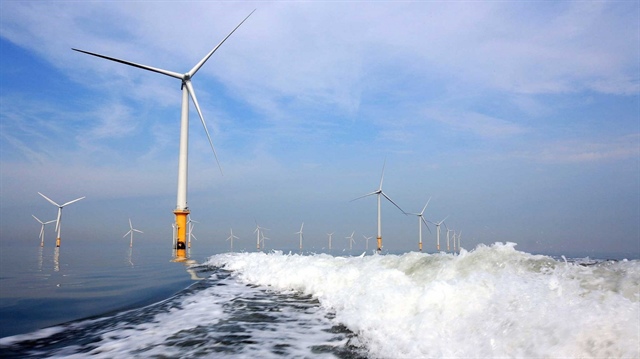Tail wind blowing for renewable energy development in Vietnam
Tail wind blowing for renewable energy development in Vietnam
According to energy experts, with its 3,000 kilometer coastline, Vietnam has major potential to become a leader in offshore wind power in Southeast Asia in the next decade.
Major opportunities
Vietnam has huge offshore wind power potential. The annual average wind speed at an altitude of 100 meters can reach 9-10 meters per second in many offshore areas, including the South Central Sea and the Gulf of Tonkin. Vietnam is believed to have technical potential to generate about 160 GW of offshore wind power.
Some localities have great wind power potential, among them Quang Ninh with 911 GW, Ninh Thuan with 25 GW, and Binh Thuan with 42 GW. In sea areas around Phu Quy or Bach Long Vi islands, the potential installed capacity reaches up to 38 GW each region.
|
A recent Global Wind Power Council (GWEC) report said Vietnam is at an important stage of energy system planning and has the opportunity to accelerate offshore wind power projects in this decade.
Based on a report co-authored by renewable energy expert Minh Ha Duong, 10 GW to 12 GW of offshore wind power could be online by 2030 in Vietnam, about a third of what has been installed around the world today.
The current target of offshore wind power capacity in the draft Power Plan VIII is 2 GW by 2030, but it could be raised to 10 GW to maximize socioeconomic and environmental benefits. This would be far more than Vietnam’s demand, estimated at 96,500MW by 2025, and 129,500MW by 2030.
Liming Qiao, Director of GWEC Asia, recommended that Vietnam urgently adopt a transition period for offshore wind power, combined with an open and systematic consultation process on purchasing, sale and auction of electricity in the future. With less than 10 years to implement Power Plan VIII, now is the time to start a broader consultation process and consider raising the target to 10 GW by 2030, Qiao said.

Wind power development contributes to ensuring national energy security |
Mechanism to attract investment
A 2020 Politburo resolution (No. 55-NQ/TW) on the strategic orientation of Vietnam's national energy development to 2030, with a vision to 2045, affirmed that priority will be given to wind and solar power development at a reasonable electricity price in association with the implementation of the Vietnam Marine Strategy.
Vietnam has been considering wind power development for over a decade. In 2011, the government issued a decision (No.37/2011/QD-TTg) on the mechanism to support the development of wind power projects in Vietnam, which it amended in 2018 (Decision 39/2011/QD-TTg).
The Ministry of Industry and Trade (MoIT) then issued Circular No. 02/2019/TT-BCT on regulations for implementation of wind power projects and a sample power purchase contract for wind power projects. As a result, Vietnam now has 533 MW of onshore and nearshore wind power, which is expected to increase to 5,866 MW by the end of 2021.
In June 2020, the Prime Minister agreed to add a list of new wind power projects to the master plan of Vietnam's electricity industry, equal to an additional 7,000 MW, based on reports and proposals of the MoIT. Hoang Tien Dung, Director of the Electricity and Renewable Energy Authority under the MoIT, affirmed that the ministry is considering a mechanism for renewable energy development.
|
The MoIT is coordinating with ministries and sectors to study and formulate regulations on the development of wind and solar power projects, including bidding, investor selection, and electricity selling prices to submit to competent authorities for approval. |


























